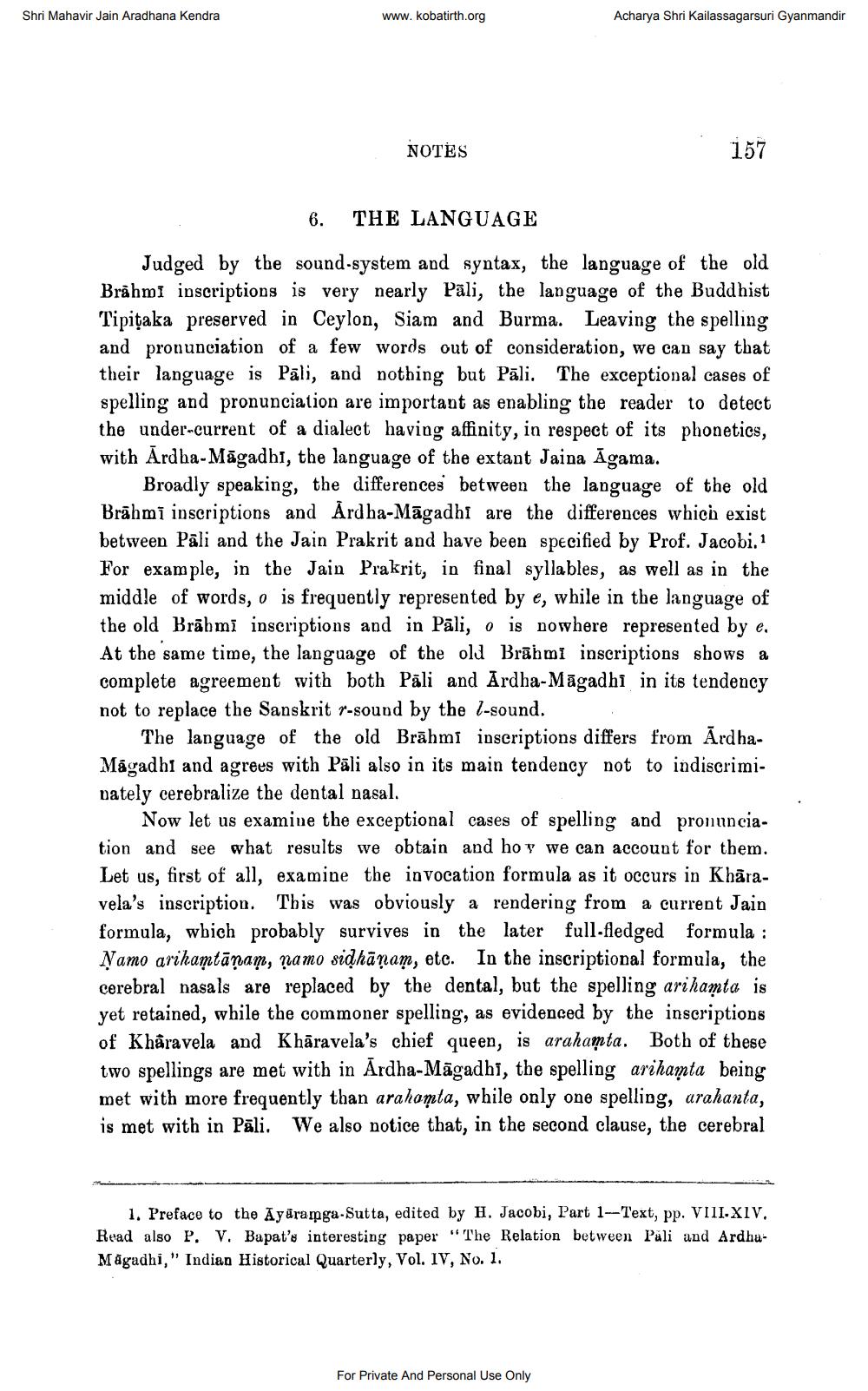________________
Shri Mahavir Jain Aradhana Kendra
www.kobatirth.org
NOTES
Acharya Shri Kailassagarsuri Gyanmandir
157
6. THE LANGUAGE
Judged by the sound-system and syntax, the language of the old Brahmi inscriptions is very nearly Pali, the language of the Buddhist Tipitaka preserved in Ceylon, Siam and Burma. Leaving the spelling and pronunciation of a few words out of consideration, we can say that their language is Pali, and nothing but Pali. The exceptional cases of spelling and pronunciation are important as enabling the reader to detect the under-current of a dialect having affinity, in respect of its phonetics, with Ardha-Magadhi, the language of the extant Jaina Agama.
Broadly speaking, the differences between the language of the old Brahmi inscriptions and Ardha-Magadhi are the differences which exist between Pali and the Jain Prakrit and have been specified by Prof. Jacobi.1 For example, in the Jain Prakrit, in final syllables, as well as in the middle of words, o is frequently represented by e, while in the language of the old Brahmi inscriptions and in Pali, o is nowhere represented by e. At the same time, the language of the old Brahmi inscriptions shows a complete agreement with both Pāli and Ardha-Magadhi in its tendency not to replace the Sanskrit r-sound by the l-sound.
The language of the old Brahmi inscriptions differs from ArdhaMagadhi and agrees with Pali also in its main tendency not to indiscriminately cerebralize the dental nasal.
Now let us examine the exceptional cases of spelling and pronunciation and see what results we obtain and hoy we can account for them. Let us, first of all, examine the invocation formula as it occurs in Kharavela's inscription. This was obviously a rendering from a current Jain formula, which probably survives in the later full-fledged formula: Namo arihamtānam, namo siḍhāņam, etc. In the inscriptional formula, the cerebral nasals are replaced by the dental, but the spelling arihamta is yet retained, while the commoner spelling, as evidenced by the inscriptions of Kharavela and Khāravela's chief queen, is arahamta. Both of these two spellings are met with in Ardha-Magadhi, the spelling arihamta being met with more frequently than arahamta, while only one spelling, arahanta, is met with in Pali. We also notice that, in the second clause, the cerebral
For Private And Personal Use Only
1. Preface to the Ayaramga-Sutta, edited by H. Jacobi, Part 1-Text, pp. VIII-XIV. Read also P. V. Bapat's interesting paper "The Relation between Pali and ArdhaMagadhi," Indian Historical Quarterly, Vol. IV, No. 1.




